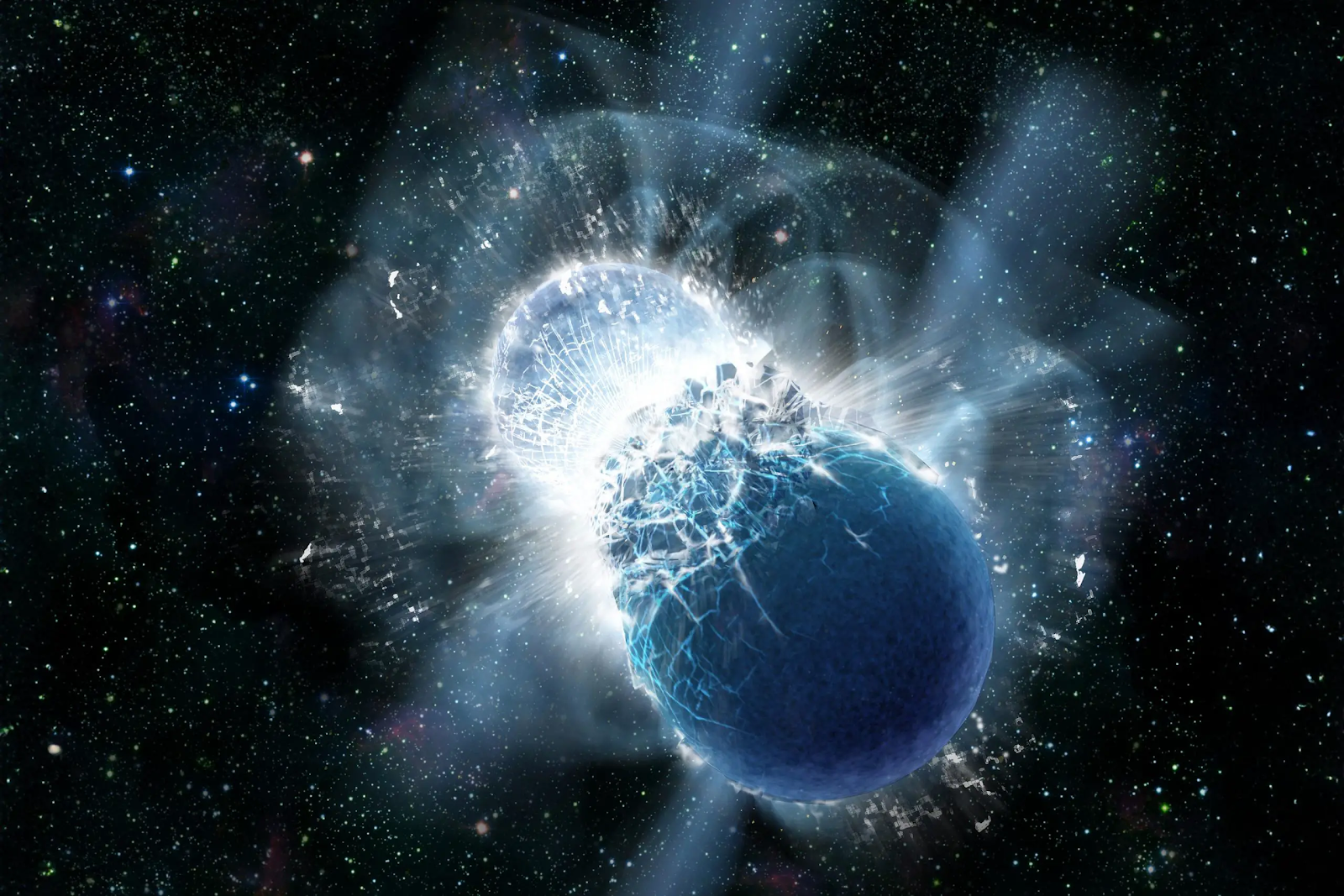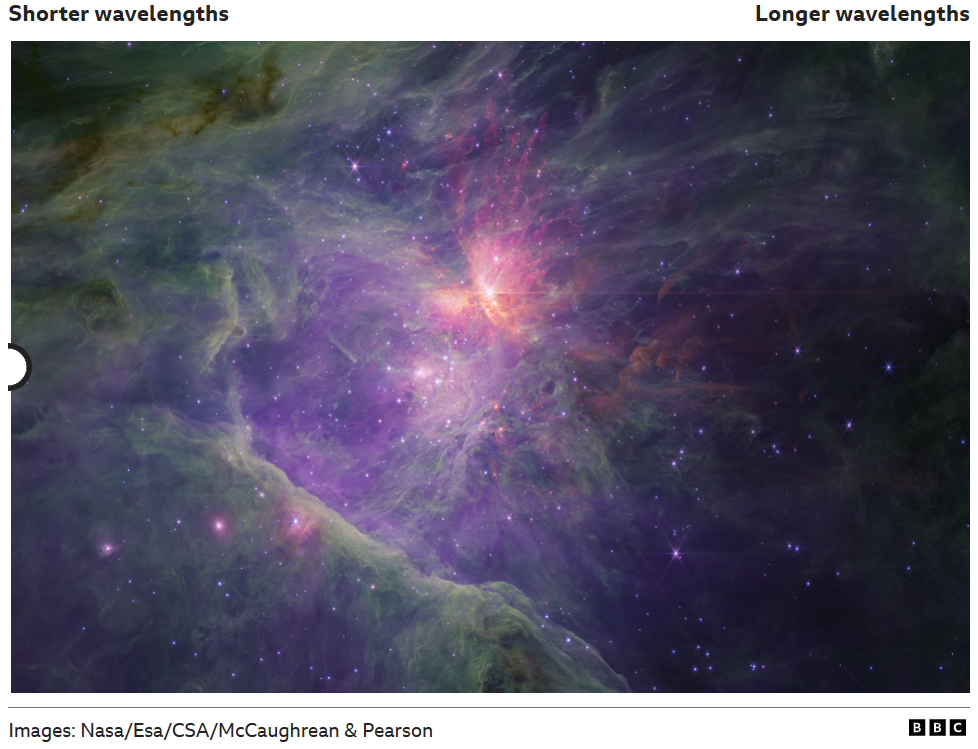Singularity and its physical shape are interesting things.
"Once you cross the threshold to form a black hole, everything inside the event horizon crunches down to a singularity that is, at most, one-dimensional. No 3D structures can survive intact. However, one interesting coordinate transformation shows that every point in the interior of this black hole maps 1-to-1 with a point on the outside, raising the mathematically interesting possibility that the interior of each black hole gives rise to a baby universe inside of it, and the possibility that our Universe itself may have arisen from a black hole in a pre-existing universe prior to our own". (BigThink/Ask Ethan: Are singularities physically real?)
When we think about the singularity and its shape. That is the point. Where time, material, and space are as an entirety. And that's why it's hard to model that point. It's hard to think that time is part of something or it's in something.
Time affects singularity as it affects all other material. And the thing that forms that thing is the "super fusion" that smashes all particles in a certain space into one entirety. That pushes quarks, gluons, and electrons together forming an extremely high energy level. That energy forms when all four fundamental forces interact at the same time.
Or at least three nuclear forces, strong and weak nuclear interactions, with electromagnetism take part in that reaction. The energy level in singularity is higher than in all other materials because so many fundamental interactions participate in its forming. Material is one form of energy and that reaction packs very much energy to singularity. That means singularity exists longer than regular material.
***********************************************************************
"Both inside and outside the event horizon of a Schwarzschild black hole, space flows like either a moving walkway or a waterfall, depending on how you want to visualize it. At the event horizon, even if you ran (or swam) at the speed of light, there would be no overcoming the flow of spacetime, which drags you into the singularity at the center. Outside the event horizon, though, other forces (like electromagnetism) can frequently overcome the pull of gravity, causing even infalling matter to escape." (BigThink/Ask Ethan: Are singularities physically real?)"
You can see in the first animation that material and energy (wave movement) fall into a black hole. So they must reflect from the center of that object. That means a black hole is like a giant gravitational version of the vacuum explosive. It sends gravitational waves or gravitational radiation. And that radiation causes a vacuum that pulls other quantum fields and particles into the black hole. In the second image is the hypothetical case the gravitational field, along with other energy fields turns into a rope-shaped form in the rotation axle of the black hole.

"In the vicinity of a black hole, space flows like either a moving walkway or a waterfall, depending on how you want to visualize it. Unlike in the non-rotating case, the event horizon splits into two, while the central singularity gets stretched out into a one-dimensional ring. Nobody knows what occurs at the central singularity, but its presence and existence cannot be avoided with our current understanding of physics." (BigThink/Ask Ethan: Are singularities physically real?)
***********************************************************************'
Image: Credit: E. Siegel/Beyond the Galaxy
"As a balloon inflates, any coins glued to its surface will appear to recede away from one another, with ‘more distant’ coins receding more rapidly than the less distant ones. Any light will redshift, as its wavelength ‘stretches’ to longer values as the balloon’s fabric expands. This visualization solidly explains cosmological redshift within the context of the expanding Universe. If the Universe is expanding today, that means it was smaller, hotter, and denser in the past: leading to the picture of the hot Big Bang."(BigThink/Ask Ethan: Are singularities physically real?)
The balloon. That introduces the expansion of the universe. We see that the distance of the points increases. And that means interaction between them is becoming weaker. Or is it so? Relative distances between those coins are the same if they also expand with the universe. Also when the universe expands the disturbing quantum fields between objects turn weaker. The model says that when quantum fields in the universe turn weaker because there is no outcoming energy. That increases the size of the particles.
************************************************************************
But when it will not get more energy from the transition disk the black hole starts to vaporize. In some models, the energy and material that fall into the black hole do not reach the singularity that is the nucleus of a black hole. In those models, the singularity itself is in electromagnetic low pressure and that thing causes the vaporization.
And that could be the reason for gravitational waves. that are leaving from black hole. The question is: do those gravitational waves come from the singularity or the event horizon? The fast-spinning singularity can form a standing gravitational wave around it. That could pull the gravitational field out from the nucleus of a black hole.
In some models, the event horizon is like a gravitational version of the Van Allen belt. It can trap particles in it. And when those particles rotate singularity radiation that travels through the event horizon pumps energy to them. So there may be a hole in the event horizon. That hole forms when the core or nucleus of the black hole sends coherent gravitational waves to the event horizon. And then that thing means that there may be no gravitational field at the poles where the radiation beam leaves a black hole.
When material falls in a black hole singularity loads energy to it. That thing is called the curvature of spacetime. The curvature of spacetime means that the quantum fields are thicker near the black hole. And that effect slows time, or otherways saying: causes time dilation. When material travels through the event horizon time starts to travel backward. And that means material should come out from a black hole at the moment when it formed.
The energy that a black hole gets, when it forms after the supernova explosion makes that material super heavy. So singularity is so high energy level material that its energy level is higher than all other material in the universe. It's packed energy that sends energy waves through space and time.
We can think of a situation like this. The singularity sends radiation monotonously. So because one frequency of radiation travels out from the gravitational center, that causes a situation where other quantum fields that is the common name for multiple power fields in the universe are falling into a black hole.
The animation shows that the singularity packs that wave movement into a form, that looks like rope. And then that radiation beam that could be gravitational waves and high-energy electromagnetic radiation travels out from the black hole's poles.
In normal energy production situations like in nuclear fission the weak nuclear interaction alone makes energy. Or rather saying, nuclear fission just releases energy. That is stored in the form of material. In annihilation, only strong nuclear interaction takes part in the reaction. The thing that forms singularity is a little bit like nuclear fusion.
When a supernova explosion happens it pushes quantum fields away. Then the quantum fields drop back into that vacuum and press all particles into their entirety. During that process, their quantum fields are impacted. And then the singularity starts to rotate or spin.
Singularity may have two spin axles. The axle between magnetic poles. And equatorial axle. And that thing forms the acceleration disk and X- or gamma-ray beam. The spin of the black hole is required for wormholes. And the whirl around them proves that black holes are spinning.
https://bigthink.com/starts-with-a-bang/singularities-physically-real/





























